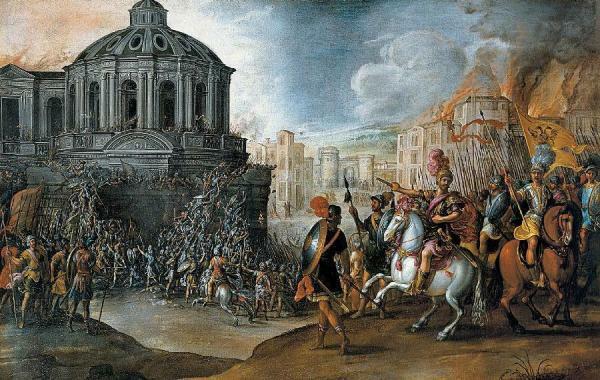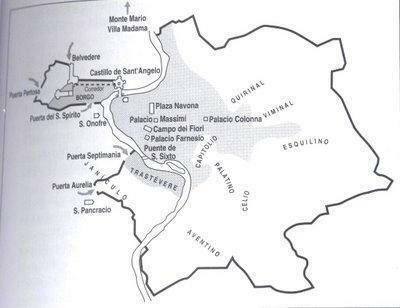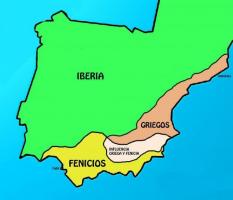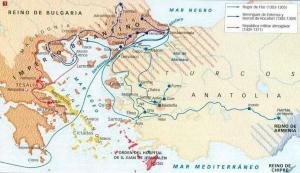Sack of Rome 1527

Image: ABC
Many have been the peoples who have come to Rome throughout time seeking the glory of that great empire that still resonates with glory today. In this lesson from a TEACHER we bring you a summary on the sack of Rome in 1527 or as it was known in ancient times the Sack of rome. In this case we cannot say that it was carried out by a barbarian people, but that it was equipped by the troops of the Holy Roman Empire, that is, by the defenders of Christianity. If you want to know the factors that led to this event, join us on this trip to Rome in the Modern Age.
Index
- Historical events that led to the Sack of Rome
- The Sack of Rome in 1527
- The consequences of the sack of Rome
Historical events that led to the Sack of Rome.
Within our summary on the sack of RomeWe have to stop at a series of events that caused the enmity between the papacy and the two powers of the moment, such as the Spanish Empire and France, to become more and more distant.
In this way, the pope Clement VII, relied on France to change the balance of power that there was at that time on Italy because this peninsula was practically under Imperial rule since the southern territories belonged to the Crown of Aragon; while the central and northern territories belonged to the Holy Roman Empire which was, at that time, ruled by Carlos I of Spain and V of Germany.
Thus began a series of warlike confrontations, in which the Empire found itself at a great disadvantage, until the taking of Milan by the imperial troops.
The Imperial army consisted of mostly mercenaries and, on the other hand, a large group of Spaniards, from the famous thirds. The commander in chief was Carlos III Duke of Bourbon, who was in turn the Constable of France, that is, a Frenchman who preferred to fight against his king than for his king.
After the defeat of the French, the Empire broke his word to pay his troops, which mutinied, producing a series of looting throughout northern Italy, finally, they came to force the commander to go down to Rome, which was attacked on May 5, 1527.

Image: Loff.it
The Sack of Rome in 1527.
The city was little protected due to a series of changes that Clemente VII had made: he had licensed a the vast majority of the Swiss Guard, in addition to eliminating the mercenary troops of the different Italian chiefs who were in the town. However, the eternal city had great walls where a large number of artillery had been stationed.
During the assault on May 6, 1527, Carlos III de Borbón was hit by a shot harquebus that would kill him hours later. This led to the soldiers becoming very aggressive, causing the city to fall that day. After the assault, the imperial troops they started the looting of the whole city, entering churches, convents and monasteries, except those founded by the Spanish.
With a new leader at the head of the army, the Prince of Orange, the attitudes of the soldiers changed little, as few respected the decision to stop looting. That way on June 6, 1527, Pope Clement VII, that was enclosed in the Castle of Sant ’Angelo, decided to give up and he agreed to pay 400,000 ducats in exchange for preserving his life.

Image: Great Battles of History
The consequences of the sack of Rome.
To conclude with our summary on the sack of Rome, we will talk about the change of power that occurred at that time.
After the cessation of hostilities, Carlos V himself was very upset by the action carried out by his troops, although this would actually end up having a positive impact on him. For from that moment on, the papacy measured very well the steps that had to be taken, always favoring the emperor, since it feared that, if acted in an uncertain way, a new war was unleashed in the interior of Italy and this time it would completely end power from Rome.
Thus, one of the most important examples that will occur shortly after the signing of the peace agreement was the prohibition, under penalty of excommunication, to divorce a Henry VIII from Catherine of Aragon, aunt of the emperor.
On the other hand, the sack of Rome, made the patronage will decline To a large extent, because part of the looting that occurred in the city, had an impact on the works of art, especially those belonging to the Vatican galleries.
If you want to read more articles similar to Sack of Rome 1527 - Summary, we recommend that you enter our category of Story.



